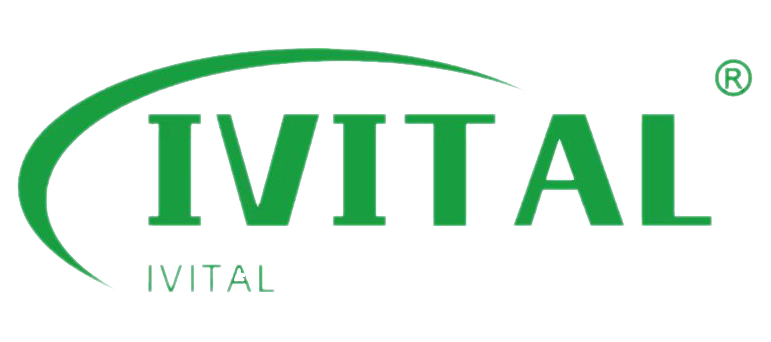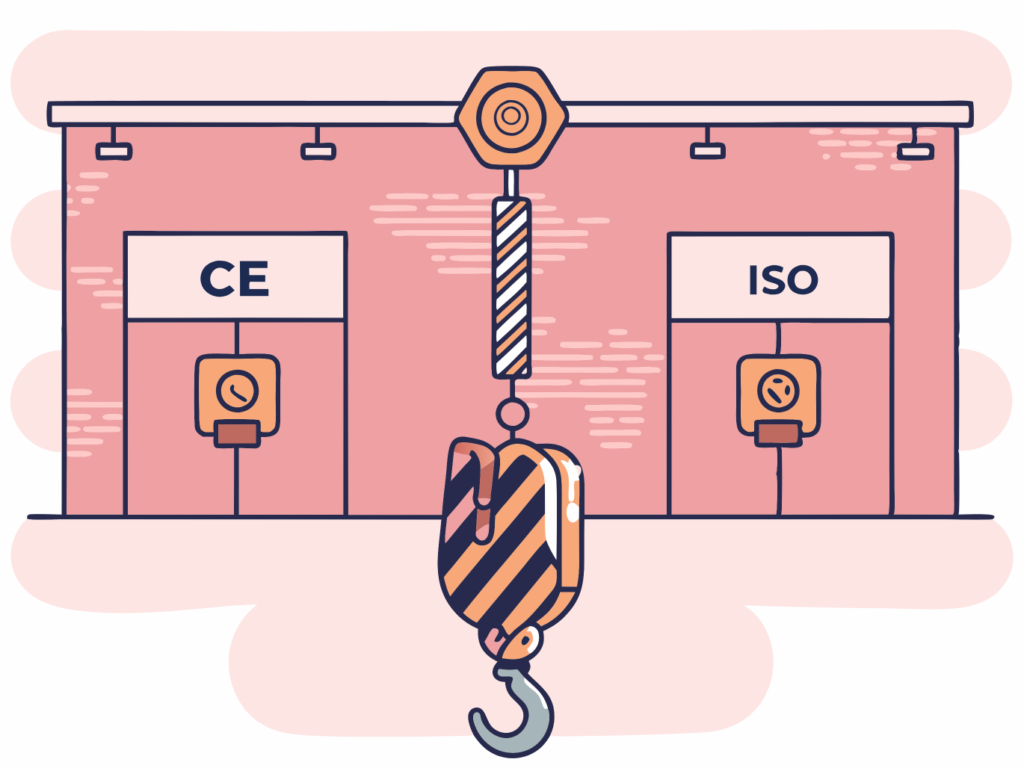I remember the first time I tried to export electric hoists to multiple countries. I thought having CE certification was enough. It wasn’t. My products got delayed at customs because I didn’t meet all local standards.
To export electric hoists without delays, you need international certifications like CE, ISO 9001, UL, and CCC. You also need regional approvals such as ECAS, SASO, SIRIM, SONCAP, KEBS, and SABS depending on the destination.
That first experience taught me to do things differently. In this guide, I’ll share how I handle certifications for Southeast Asia, the Middle East, and Africa.
[Table of contents]
- What Is CE Certification and Why Is It Important for Exporting Electric Hoists?
- How Does ISO 9001 Certification Strengthen Export Credibility?
- Why UL Certification Matters for Electric Hoists in Global Markets?
- What Is CCC Certification and When Is It Required?
- What Regional Certifications Are Required for Electric Hoists in Southeast Asia?
- What Are the Certification Requirements for Electric Hoists in the Middle East?
- What Are the Certification Standards for Exporting Electric Hoists to Africa?
- How Long Do CE, ISO, UL, and Regional Certifications Take?
- Where Can I Find Help with Export Certifications for Electric Hoists?
What Is CE Certification and Why Is It Important for Exporting Electric Hoists?
When I first shipped electric hoists to Southeast Asia, the buyer asked for a CE certificate. I thought it was only for Europe. I was wrong.
CE certification shows that electric hoists meet EU safety, health, and environmental requirements. Many countries outside Europe accept it as a trusted standard.
How I Got CE Certification for My Hoists
Steps I Followed
- I reviewed the EU Machinery Directive (2006/42/EC).
- I conducted a risk assessment and technical evaluation.
- I prepared a technical file with test results and product information.
- I issued a Declaration of Conformity and applied the CE mark.
Documents I Prepared
| Document Name | Purpose |
|---|---|
| Technical File | Describes design and compliance |
| Test Reports (EN/IEC) | Prove safety and performance compliance |
| Declaration of Conformity | Legal statement by the manufacturer |
My Advice
Use a notified body for product testing if you’re unsure about compliance. It saves time and builds buyer confidence.
How Does ISO 9001 Certification Strengthen Export Credibility?
My first big client in Saudi Arabia asked for my ISO 9001 certificate. I realized it wasn’t just a piece of paper—it was proof of my quality system.
ISO 9001 certification proves that your company has a quality management system. It builds trust with international buyers.
Why ISO 9001 Helped Me Win Deals
What I Did
- I worked with a certified body (SGS).
- I documented all processes, from procurement to manufacturing.
- I passed an external audit and got certified.
Documents Involved
| Document Name | Purpose |
|---|---|
| Quality Manual | Describes quality policies and objectives |
| Process Procedures | Details manufacturing and quality steps |
| Audit Reports | Proves compliance with ISO standards |
Tip
ISO 9001 is often required before you can apply for regional certifications like SASO or SABS.
Why UL Certification Matters for Electric Hoists in Global Markets?
A client in South Africa once told me UL certification was a must. I thought it was only for the U.S. market, but UL has global value.
UL certification demonstrates product safety. It is highly trusted in the Middle East, Africa, and Southeast Asia, especially for electrical safety.
My UL Certification Process
Steps I Took
- I submitted samples to UL for testing.
- They evaluated my hoists for electrical and mechanical safety.
- I got listed in their certification database.
Documents I Prepared
| Document Name | Purpose |
|---|---|
| Product Schematics | Detailed design for safety review |
| Test Data | Verifies compliance with UL standards |
| UL Follow-up Service Agreement | Ensures ongoing compliance |
What I Learned
UL approval often speeds up customs clearance in strict regions like Saudi Arabia.
What Is CCC Certification and When Is It Required?
When I exported electric hoists from China, CCC certification was mandatory. Buyers in Southeast Asia sometimes asked for it too.
CCC (China Compulsory Certification) is mandatory for products sold in China. Some Southeast Asian countries recognize it as a quality standard.
How I Got CCC Certification
My Steps
- I applied through the Certification and Accreditation Administration of China (CNCA).
- I provided product samples for testing at a CNCA-approved lab.
- I received the CCC mark and certificate.
Documents I Submitted
| Document Name | Purpose |
|---|---|
| Application Form | Start the certification process |
| Test Reports | Verify product compliance |
| Factory Audit Reports | Confirm quality control at the factory |
My Experience
CCC can open doors in Asia. Some B2B buyers specifically ask for it.
What Regional Certifications Are Required for Electric Hoists in Southeast Asia?
I once had my shipment delayed in Malaysia because I didn’t have SIRIM approval. Since then, I always check each country’s rules.
Southeast Asia requires local certifications in addition to international ones like CE and ISO.
Common Certifications I Use
| Country | Certification | What It Means |
|---|---|---|
| Singapore | CPS Scheme | Consumer Protection Safety |
| Malaysia | SIRIM | Standards and Industrial Research |
| Thailand | TISI | Thai Industrial Standards Institute |
| Vietnam | CR Mark | Compulsory Certification Mark |
Tip
Many countries in Southeast Asia recognize CE, but still require local testing and labeling.
What Are the Certification Requirements for Electric Hoists in the Middle East?
My first shipment to Saudi Arabia was stuck until I completed the SASO process. Now I plan ahead for the Middle East.
The Middle East focuses on SASO certification via the SABER platform, ECAS for UAE, and sometimes UL certification.
Key Middle East Certifications
| Country | Certification | What It Means |
|---|---|---|
| Saudi Arabia | SASO (SABER) | Product Certificate and Shipment CoC |
| UAE | ECAS | Emirates Conformity Assessment System |
| Kuwait | KUCAS | Kuwait Conformity Assurance Scheme |
What Worked for Me
Using local agents to navigate SABER and ECAS saved me time and avoided paperwork mistakes.
What Are the Certification Standards for Exporting Electric Hoists to Africa?
I was caught off guard when my electric hoists didn’t have SONCAP in Nigeria. I fixed that quickly.
Africa requires country-specific certifications to clear customs and meet project requirements.
Certifications I Always Get
| Country | Certification | What It Means |
|---|---|---|
| South Africa | SABS | South African Bureau of Standards |
| Nigeria | SONCAP | Standards Organisation of Nigeria |
| Kenya | KEBS (PVoC) | Kenya Bureau of Standards |
Pro Tip
Attending the Africa Machinery Exhibition gave me contacts that helped speed up KEBS certification.
How Long Do CE, ISO, UL, and Regional Certifications Take?
I learned to plan certification early. Some approvals take longer than I expected.
CE and ISO can take 4-8 weeks, UL up to 12 weeks, and regional certifications vary from 4 to 10 weeks depending on the country.
My Certification Timeline
| Certification | Timeframe | Notes |
|---|---|---|
| CE | 4-8 weeks | Depends on testing and documents |
| ISO 9001 | 6-10 weeks | Requires factory audit |
| UL | 8-12 weeks | Detailed product evaluation |
| SASO (SABER) | 4-6 weeks | Requires local agent assistance |
| SABS | 8-10 weeks | Involves product and factory audits |
Where Can I Find Help with Export Certifications for Electric Hoists?
I didn’t figure this out alone. I got support from certification consultants and industry groups.
Work with certification companies, attend trade shows, and join industry associations to stay informed.
Resources That Helped Me
- Certification Companies: SGS, Intertek, TÜV SÜD
- Trade Shows: Southeast Asia Machinery Expo, Middle East Equipment Fair, Africa Machinery & Equipment Exhibition
- Associations: International Hoisting Equipment Association, Local Chambers of Commerce
Conclusion
International certifications simplify exports and build global trust for electric hoists.



